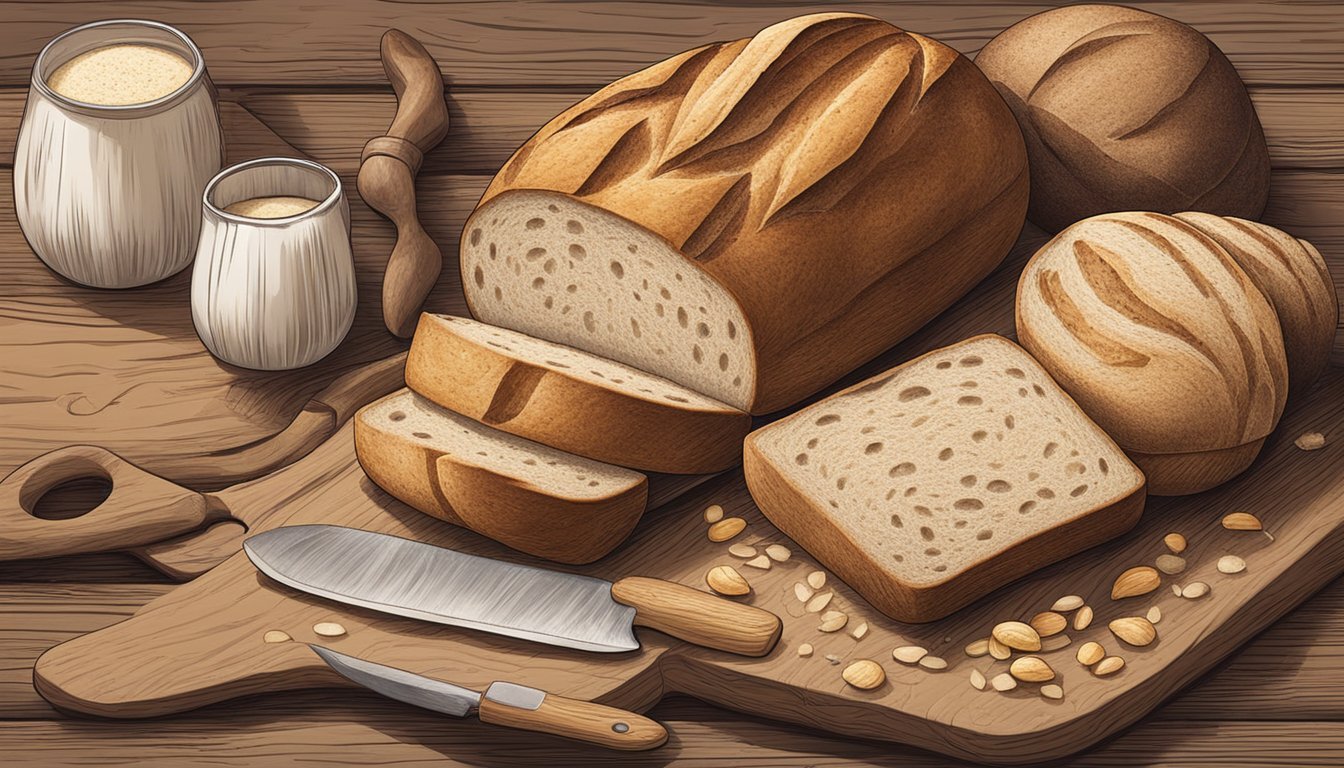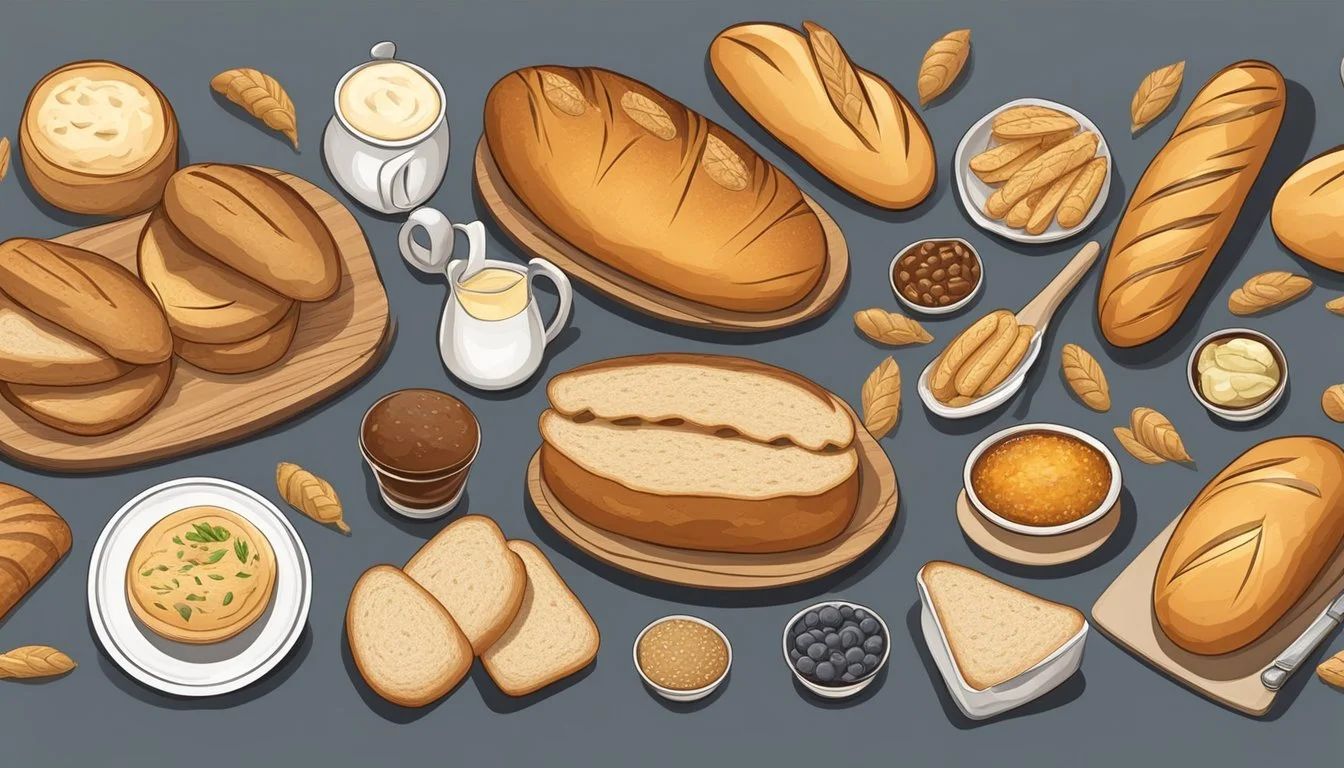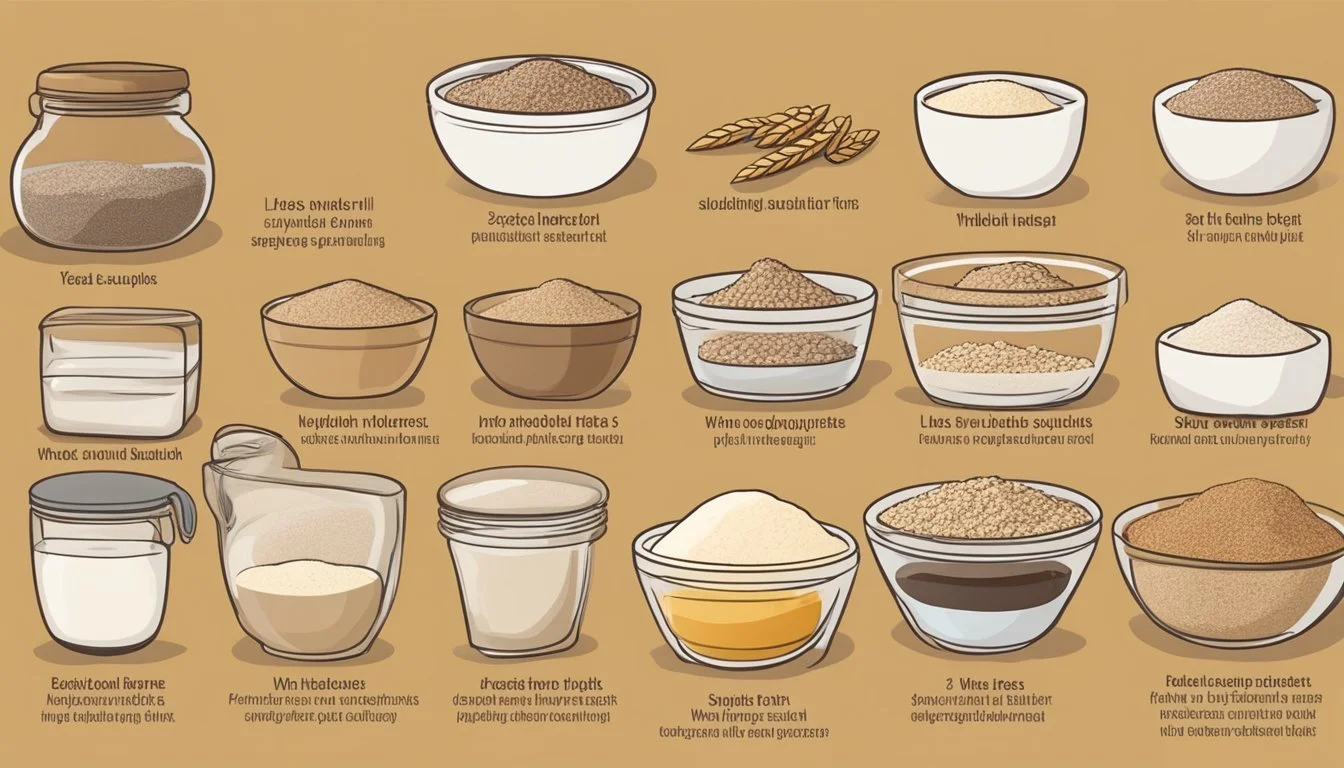Baguette Substitutes
Top Alternatives for Your Next Sandwich
A baguette, with its crisp crust and soft, airy interior, is a staple of French culture and an iconic symbol of French cuisine. Renowned for its long, thin shape, the baguette is traditionally made with a specific type of dough that yields a distinct texture and flavor. It’s a versatile bread that's often enjoyed plain, as a sandwich base, or as an accompaniment to cheese and charcuterie (What wine goes well with charcuterie?).
While the allure of a fresh French baguette is undeniable, not everyone has the luxury of a traditional baguette pan to achieve that characteristic shape and crust. Home bakers often seek substitutes that allow them to recreate the baguette experience with tools they have on hand. One common solution is using a regular baking sheet, which, while it may not offer the exact crust-to-crumb ratio of a traditional baguette, can still result in a delicious loaf.
Baking a baguette at home without specialized equipment invites creativity and often requires a few adjustments to technique. For instance, employing steam during the baking process or using makeshift dough-shaping materials can imitate some aspects of the classic baguette-making method. These adjustments allow for the production of a loaf with a comparable crust and texture, preserving the essence of what makes the baguette such an integral component of French culinary tradition.
Understanding Baguettes
The secret to crafting an authentic baguette lies in mastering its few simple ingredients, precise baking processes, and distinct physical characteristics. This section delves into the critical aspects of baguettes, from their fundamental components to the end result.
Fundamentals of Baguette Ingredients
The traditional baguette recipe calls for only four main ingredients: flour, water, salt, and yeast.
Flour: A high-protein flour is essential, providing the necessary gluten structure.
Water: This is introduced at a specific hydration level to ensure a delicate balance between a crispy crust and a slightly chewy interior.
Salt: It adds flavor and regulates yeast activity.
Yeast: Whether fresh or dry, yeast initiates fermentation and is fundamental for the dough to rise.
The Baking Process
The making of a baguette is as much an art form as it is a science, with a few key steps:
Mixing: Ingredients are combined to form the dough.
Bulk Fermentation: The dough undergoes a first rise, developing flavors and texture.
Shaping: The dough is shaped into the traditional slender form.
Final Rising: Also known as proofing, allows the shaped dough to rise again before baking.
Baking: Typically done in steam-injected ovens to achieve that hallmark crispy crust.
Physical Characteristics
A baguette can be identified by its unique attributes:
Shape: Long and thin with a length usually around 2 feet.
Size: Generally 2-3 inches in width.
Crust: Golden-brown with a signature crispness.
Interior: Exhibits a slightly chewy texture, defined by a pattern of irregular air holes resulted from a proper fermentation.
Baguette Ingredient Alternatives
Exploring different baguette ingredient alternatives can lead to unique flavors and textures. This section will discuss various options for flour, yeast, liquid, and salt when making homemade baguettes.
Flour Varieties
Baguettes are traditionally made with wheat flour which gives them their classic chew and structure due to higher gluten content. However, one can experiment with other types of flour for diverse results:
Wheat Flour: For a standard baguette, high-gluten bread flour is preferred.
Rye Flour: Adding rye flour to the mix introduces a distinct, earthy flavor.
King Arthur All-Purpose Flour: A versatile substitute providing a satisfactory balance between soft and chewy.
Yeast Substitutes
The rise and flavor of a baguette are greatly influenced by the leavening agent:
Sourdough Starter: Utilizing a sourdough starter brings a tangy flavor and complex fermentation to the bread.
Poolish: A pre-fermentation technique which adds a subtle taste and extends shelf life while using less yeast.
Baking Powder/Soda: For yeast-free options, a combination of baking powder or baking soda with an acid can be used although the texture will differ.
Non-Dairy Liquid Alternatives
The liquid component in a baguette recipe contributes to the dough's hydration and consistency:
Water: A traditional choice, maintaining simplicity and hydration balance.
Milk: Incorporating milk can enrich the dough for a softer crumb and browner crust.
Salt Options
Salt is essential for flavor and controlling yeast activity in baguette dough:
Sea Salt: Known for a finer flavor, sea salt can be used for a nuanced taste.
Kosher Salt: An alternative that is pure and may enhance the bread's flavor profile without adding additional minerals.
Baking Equipment Alternatives
In the realm of baking, especially when approaching the creation of a homemade baguette, the alternatives to specialized equipment can be both practical and effective, ensuring every baker can achieve a commendable result.
Oven Variations
The traditional oven's role in baguette baking is to provide consistent temperature and to generate steam for proper oven spring. However, not every kitchen is equipped with a steam-injecting oven which is ideal for bread making.
Temperature: If a baker lacks a professional baking oven, it is key to preheat a conventional oven to the highest temperature, often between 450°F to 500°F (232°C to 260°C), for at least 30 minutes before baking to mimic a bread oven’s immediate heat.
Steam Creation: One can introduce steam by placing a metal pan at the bottom of the oven and adding boiling water to it right before placing the baguette dough onto the center rack. The steam contributes to a better crust and promotes oven spring.
Baking Tools
Not having specific baguette-baking tools doesn't preclude one from making this French bread. Simple kitchen staples can stand in for professional gear with little compromise on quality.
Baguette Pan Replacement: A baking sheet coupled with parchment paper serves as an excellent substitute for a baguette pan. If shaping holds difficulty, rolling the dough in a linen cloth or kitchen towel floured to prevent sticking can help maintain shape during proofing.
Measuring Tools: While a kitchen scale is the gold standard for measuring ingredients, measuring cups and spoons can suffice. Accuracy is critical, so one should level the measuring cups with a straight edge for dry ingredients and pour liquids at eye level.
Mixing and Proofing: A simple mixing bowl, larger than the dough to account for rising, can be used for both mixing and proofing the baguette dough. Kneading can be done on any clean, flat surface dusted with flour to prevent sticking.
Shaping Tools: To shape the dough, bakers might use a plain cutting board as a makeshift peal for transferring the shaped baguette to the oven. Additionally, a well-floured kitchen towel can double as a couche for resting and proofing shaped dough to retain its structure before baking.
Alternate Techniques and Processes
In the realm of baguette baking, achieving a professional outcome does not require professional equipment. Home bakers can adopt various techniques and processes with everyday tools to create a perfect baguette.
Dough Mixing and Kneading
For a baguette recipe that rivals those of professional bakers, precise dough mixing and kneading are crucial. A kitchen scale should be used for the accurate measurement of ingredients. When combining them, one can use a stand mixer with a dough hook attachment or opt for hand kneading. If using the latter method, the dough ought to be kneaded until smooth and elastic, usually about 10-15 minutes.
Mixing: Weigh ingredients carefully and mix until just combined.
Kneading: Employ a push, fold, and turn method until the dough is cohesive.
The Shaping Journey
Shaping a baguette is an art in itself. Once the dough has been properly mixed and kneaded, it should be divided using a bench scraper or knife. Each piece is then rolled and elongated to form the characteristic shape of a loaf of bread. Pay close attention to keeping the surface tension tight without tearing the dough.
Dividing: Cut the dough into equal pieces with a bench scraper.
Forming: Roll into logs, tapering the ends slightly for the traditional baguette shape.
Rising and Fermentation Tactics
Fermentation plays a significant role in flavor and texture development. The initial bulk fermentation is a period where the dough should be allowed to rise, typically for 1 to 2 hours at room temperature. Subsequently, after shaping, the final rise serves as a critical phase before baking. Ensure the shaped dough is covered and placed in a draft-free area to prevent skinning and to achieve optimal rising.
Bulk Fermentation: Allow the dough to rest and rise until doubled.
Final Rise: Shape the dough and let it rise, ensuring a proper final expansion.
Through the application of these techniques, home bakers can confidently approach baguette making, yielding excellent results in their very own kitchens.
Homemade Baguettes
Homemade baguettes offer the satisfaction of DIY baking with a distinctly European touch. Mastering the French bread recipe at home not only fills the kitchen with an irresistible aroma but also results in a pastry with a desirable crust and soft interior.
Creating a Homemade Recipe
To craft an authentic baguette at home, it's essential to start with a basic recipe that requires only four key ingredients: flour, water, yeast, and salt. A standard recipe might begin with whisking water and yeast, allowing it to activate and become foamy. Flour is then integrated, and the mixture is left to rest so the flour fully hydrates. Kneading follows, developing gluten which will provide the necessary structure. For an optimal rise, a starter or pre-ferment, typically a blend of the same ingredients left to rest for hours, can be used to deepen the flavor.
Enhancing Flavor and Texture
The flavor and texture of homemade baguettes are enhanced using a few techniques and additions:
Pre-ferments: A gloppy yeast mixture, or starter, sits for 8 hours or overnight to build gluten and enhance flavor.
Kneading: This process is essential for creating a smooth and elastic dough, which results in a chewy texture.
Refrigeration: Retarding part of the dough in the refrigerator can help develop flavor and create a tender crumb.
Steam: Introducing steam in the oven, such as by placing a pan with boiling water at the bottom, contributes to a glossy, crisp crust.
Ingredients for Flavor: Small quantities of olive oil or honey can be added to the dough for a subtle richness or sweetness.
Serving and Pairing Ideas
When serving homemade baguettes, consider the following aspects to elevate the experience:
The baguettes are best enjoyed fresh from the oven when the crust is at its crispiest.
Sliced baguette pairs splendidly with a variety of cheeses, serving as a neutral vessel that complements from creamy brie to sharp cheddar.
The bread's flavor profile is neutral, allowing it to accompany a wide range of dishes, from simple spreads to robust charcuterie plates.
For a twist on the traditional, substitute a sliced homemade baguette for ciabatta in paninis to enjoy a different texture and taste.
When integrating these tips, homemade baguettes can become more than just an accompaniment; they can be the highlight of a meal or an exemplar of one's baking prowess.





